Every mountain worth the name has rocks at the top - and trees at the bottom. Granite at the top and Scots Pine at the bottom: that's the Cairngorms. Limestone at the top and scruffy-looking birches at the bottom: we're somewhere in Yorkshire. lavafields at the top, the sea at the bottom, and groves of laurel spread across the middle: it’s Tenerife in the Canary Islands. Dirty grey boulders above and rhododendrons below: we're on Everest. Volcanic ash and banana trees: it's Kilimanjaro.
The typical rock of Lakeland is that rough, grey Borrowdale Volcanic, so knobby to scramble, so fierce-but-friendly to climb. But what is Lakeland's typical tree?
The best way in is by Borrowdale. Now the Lakeland tree of trees is the oak. Oaks, old and twisted, drop their leaves into the River Derwent and make a green shade for the rare mosses and liverworts of Johnnie's Wood. Troutdale Pinnacle emerges from the green like a late sleeper struggling out from under the duvet. Slate, and bent oak roots, and a mulch of dead oak leaves, make up the paths of Borrowdale from Derwentwater to Glaramara and the Scafells.
It may take several years of Lakeland visits before you even notice the juniper trees. From a distance the low-growing juniper can be taken for a gorse bush. Come closer, and it looks like one of those variegated evergreens - so useful in a suburban garden run on the zero-maintenance plan, just poke it up through a hole in the concrete paving. But take off the rucksack and sit down on a nearby rock, and you'll discover a tree that's older and slower than anything that comes in a container from the garden centre.
The juniper is a small conifer, with grey-green needles arranged in threes. In late Summer it carries a hard, purplish fruit. Walkers may not notice it, but it's actually the most widespread tree in the world, and the only one to grow wild on both sides of the Atlantic. It grows on chalk downlands of the south, and in peaty pine forests of the far north, but it also grows on steep screes and stony places where the sheep can't get to nibble but the winds blow too fierce for any gentler tree. In Lakeland, such steep stony places are plentiful.
Perverse people who climb the Langdale Pikes not from Lang dale but from Dunmail Raise will know the right of way from Dungeon Gill to Grasmere over the Silver Howe ridge. It's a tough climb out of Langdale, with a Langdale bar meal inside you and the sun going down behind Bowfell. At the ridge crest are hidden boggy bits, and confusing knolls. Did you remember the torch? Will there be a path down the back? When will the police start to wonder about the car?
As the slope steepens, the dark shadow of juniper lies along the side of Easedale. The trees are waist-high, and as you brush them their sharp aromatic scent drifts on the night air. Two hundred feet below, Easedale Beck chatters gently in the silent evening.
Large popular paths don't pass through the steep, stony, interesting places where the junipers grow. Leave the main track and come off Pike of Blisco across the tarns and hummocks of Wrynose Fell. There's a whole tilted forest of juniper on the high slope of Blake Rigg, looking down on Blea Tarn. On the eastern side of Ullswater, where the higher path passes behind and above Silver Crag, there's a little pass that's between two walls of broken rock and juniper. The path takes a bend, and hops across a beck, and suddenly there's all Ullswater below you once again.
Lakeland is small, and old, and compressed - just like the juniper that grows there. Compressed Lakeland has, in its eight hundred square miles, a little bit of almost everywhere. Lakeland's little bit of Corsica is on the Greenside path. And it's all done with junipers.
On a sizzling Summer afternoon the Greenside path zig-zags up below an overhang into green haze. The ground is stones, and bare rock. There's very little natural greenery to be seen. In fact there's none, for what grows here is junipers and they are slaty grey. Above the junipers, the high triangles of Birkhouse Moor and Catstye Cam float away into the haze. The path takes another bend, and climbs even more steeply. Dust rises and coats the needles of the junipers, and that Patterdale ice cream starts to seem a long time ago and much, much further down.
Lakeland is the mountain range that has everywhere. There are odd corners of Caledonian pines pinched from the Cairngorms. In Autumn Canada lends its golden birches. Winter snowfields run down into gloomy Austrian slopes of mossy larch.
Juniper berries, Mont St Pierre
But Lakeland's own tree - the tree that's old and wrinkled like Lakeland itself - is the juniper. They make gin from the juniper, and you can see its berries on the label of the bottle. Gin and water may not be the most sophisticated of drinks - even if it is a convenient way to get drunk quickly. Juniper and Lakeland, though: that's a combination to get you high without the headache.





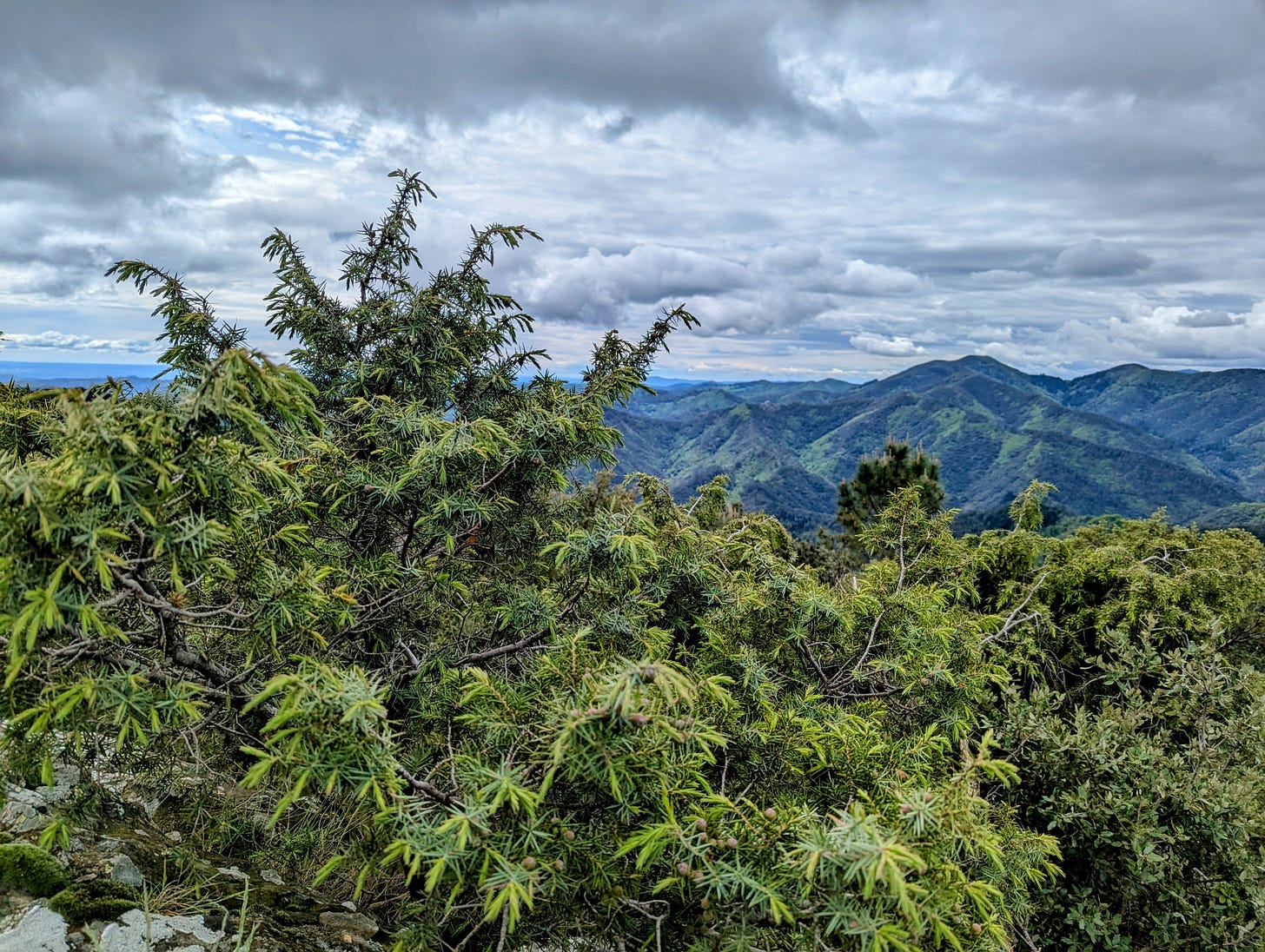
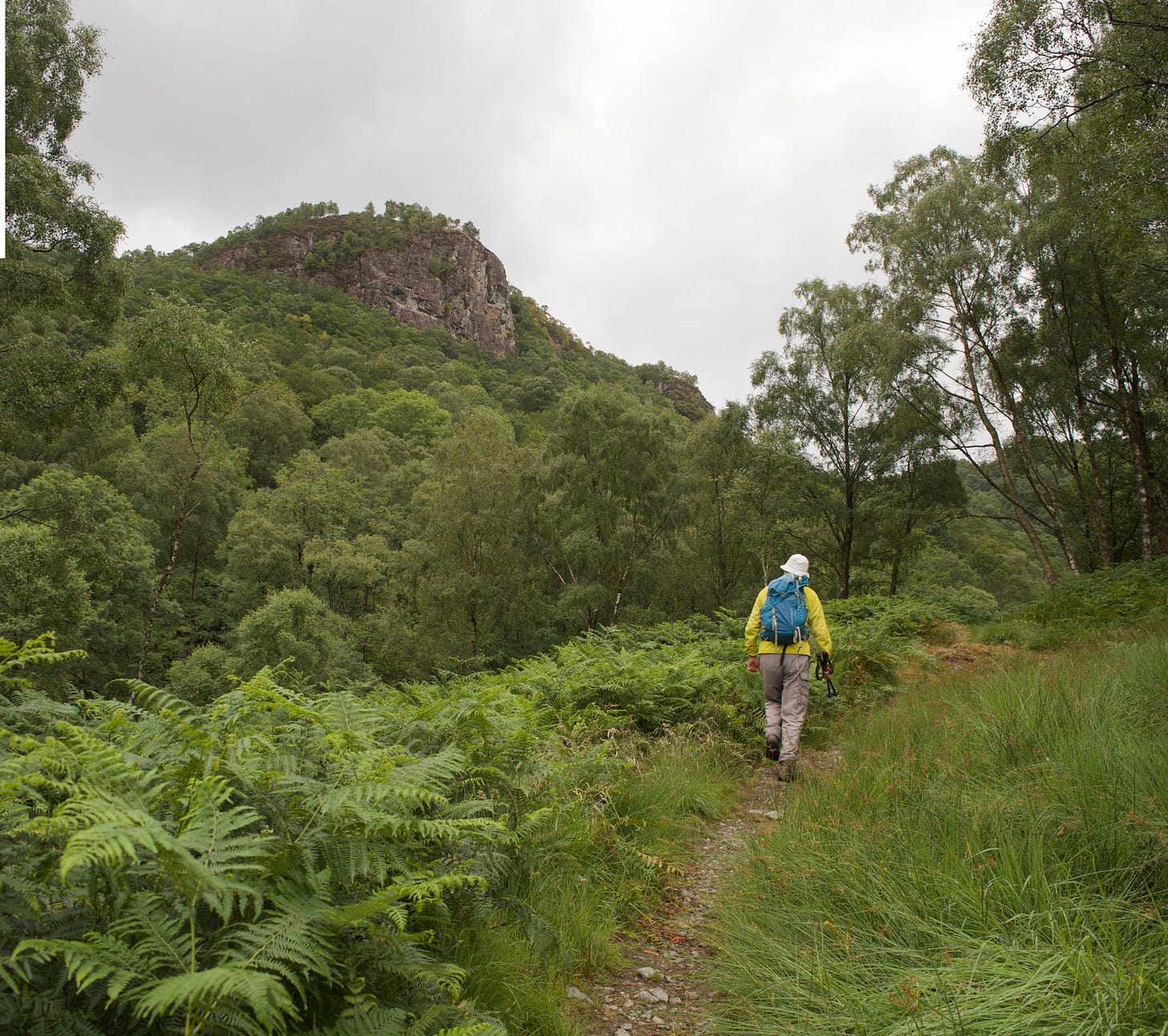
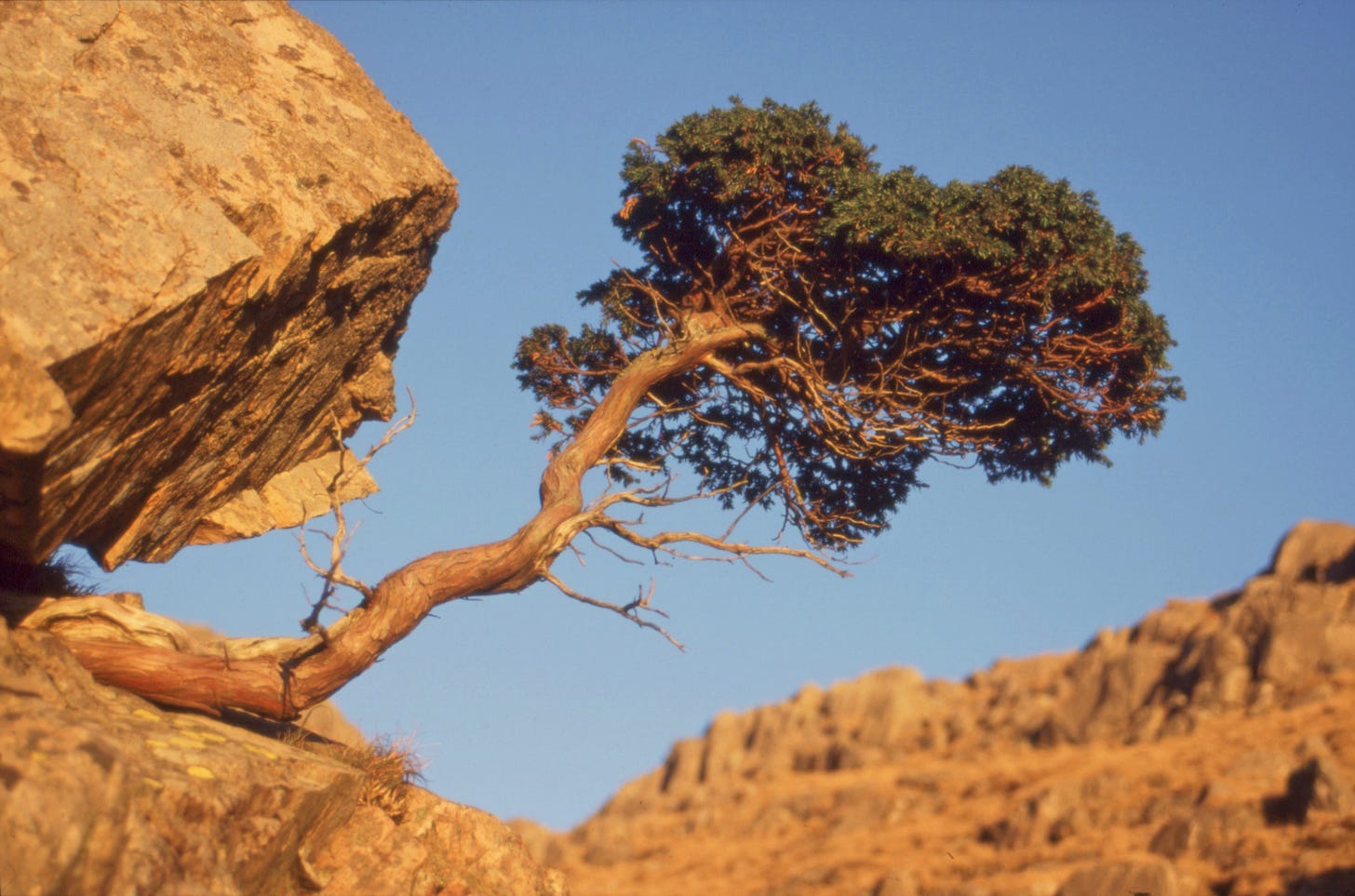
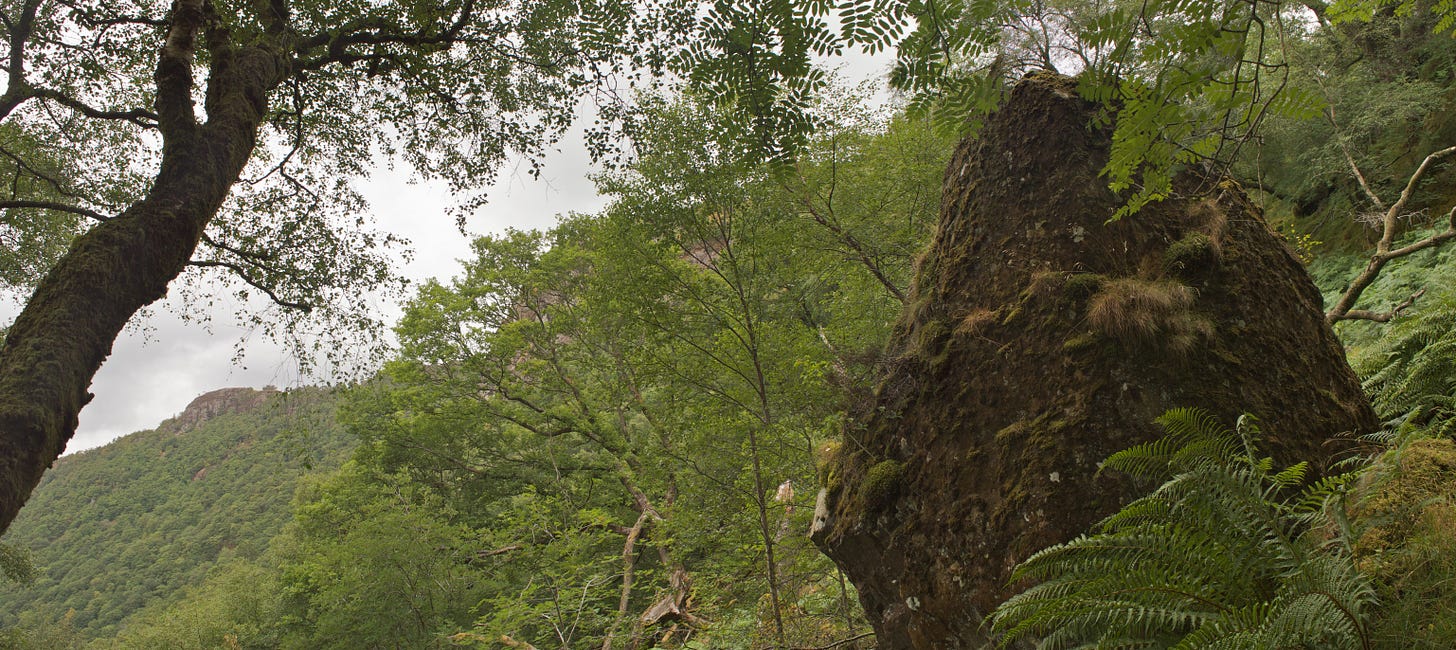
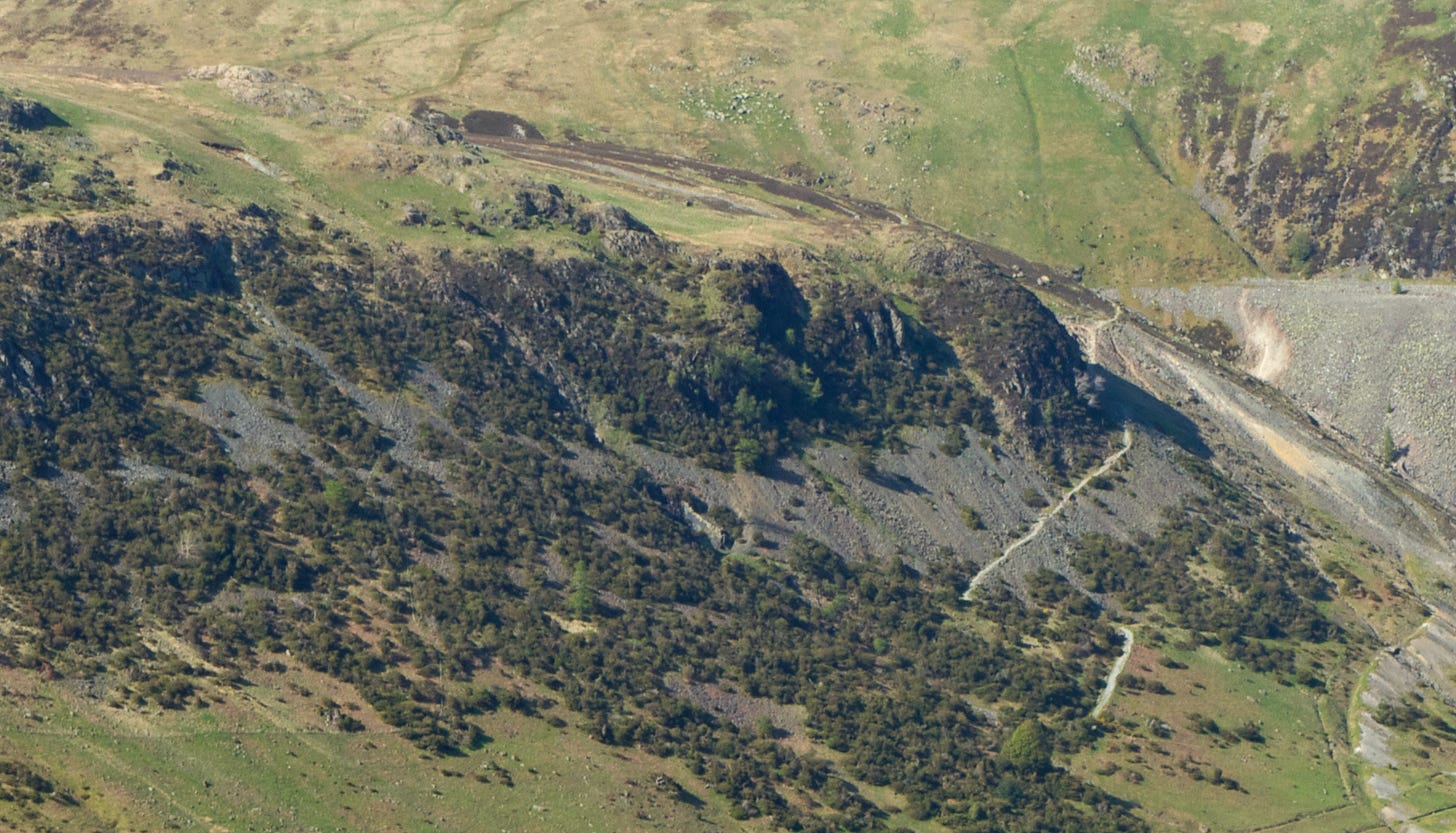
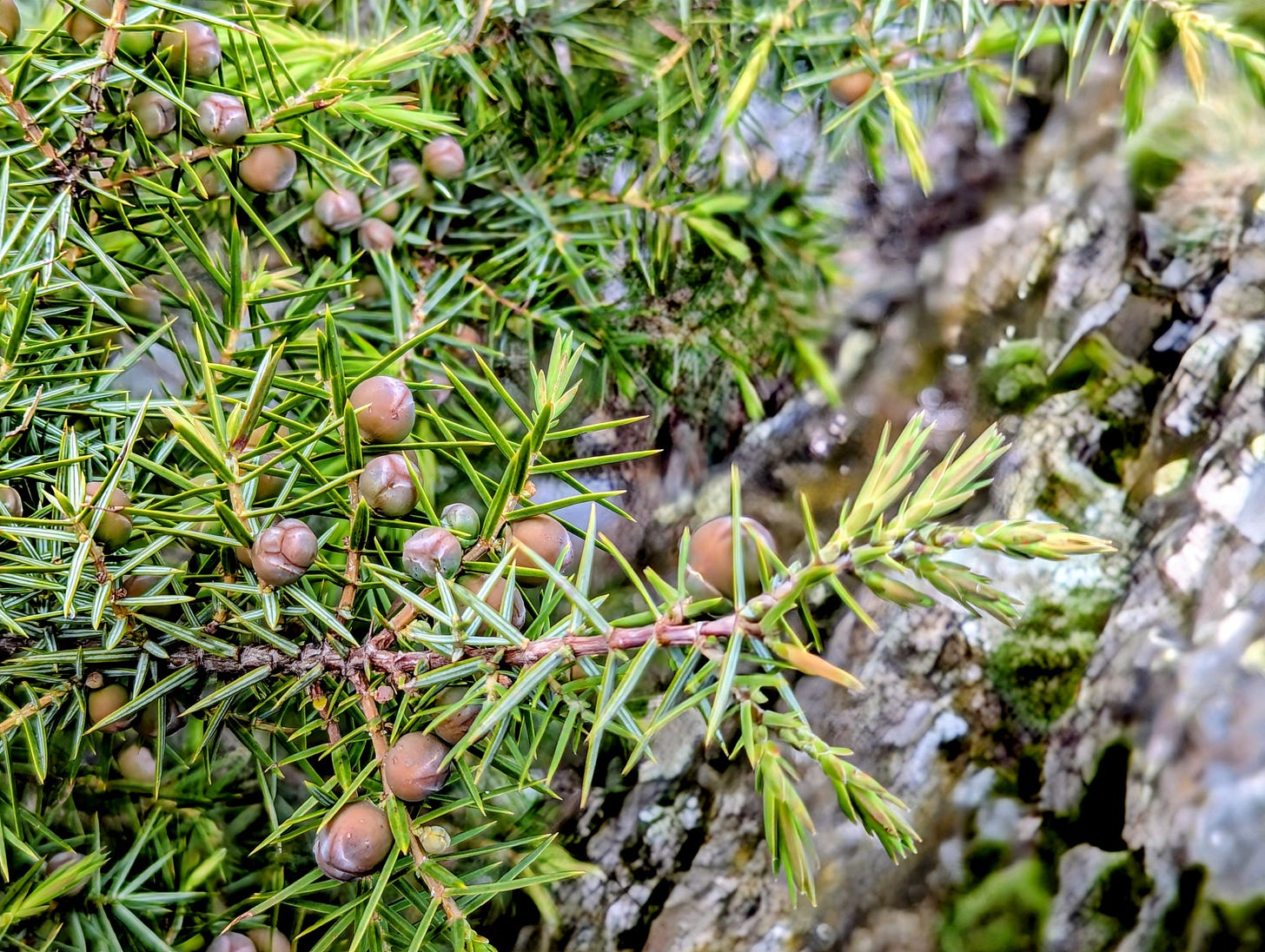
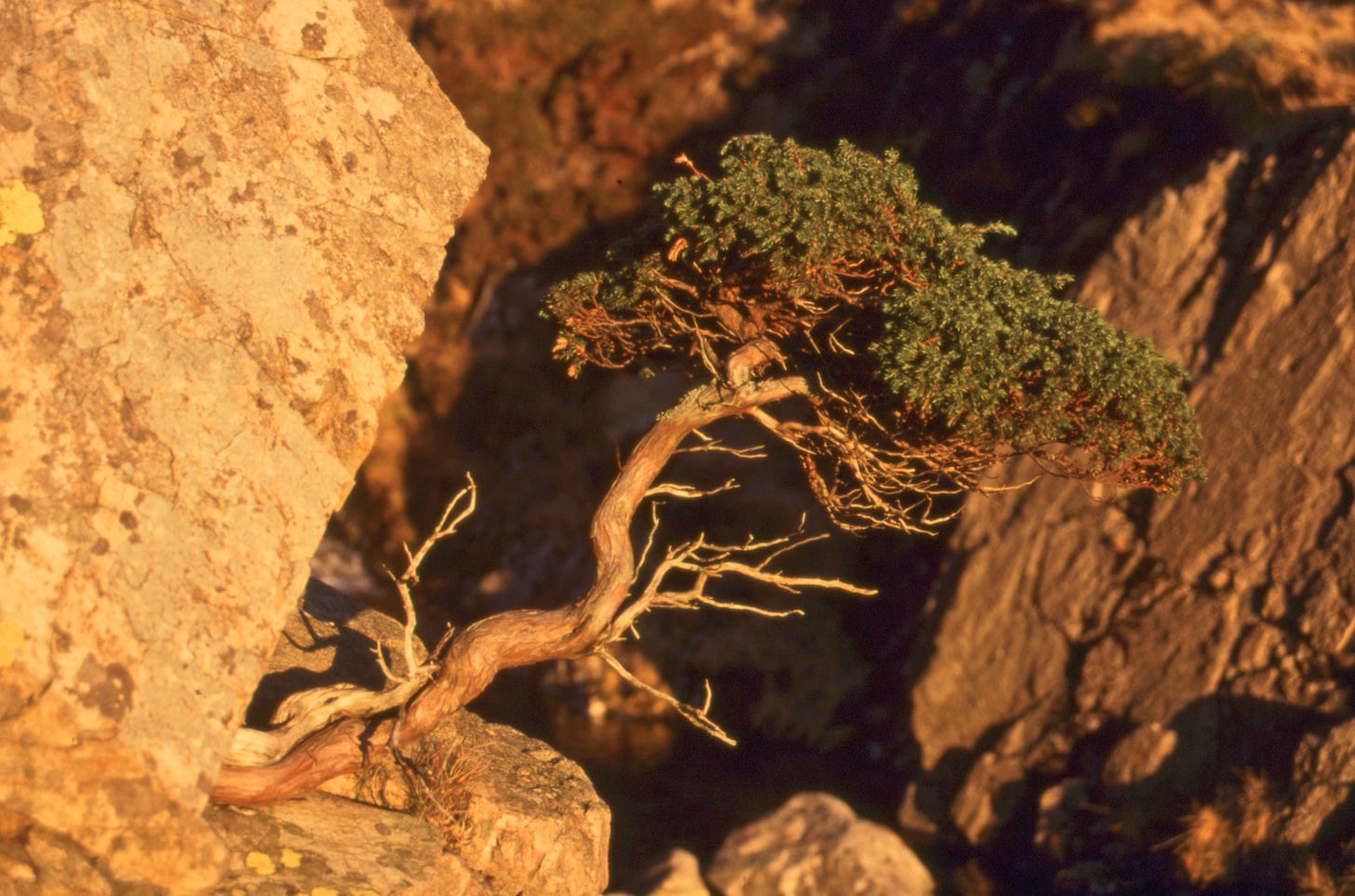
Really enjoyed that, Ronald, a delightfully different perspective on the Lake District.
Grand stuff, and I can't argue that the juniper is a true Lakeland tree—but, as you suggest, an underrated and often overlooked one. Which seems to be reflected in place names. I can easily think of crags and other features named for oak, birch (Birks, Birkrigg), holly, etc.… but not on a few minutes thought coming up with any juniper names.